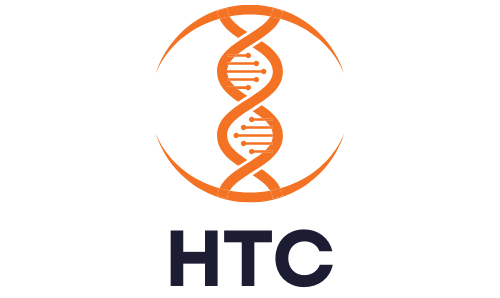The Future of Digital Health: Opportunities and Challenges
The digital health landscape is rapidly evolving, fundamentally transforming how healthcare is delivered. Digital health encompasses a wide array of technologies, including telemedicine, remote patient monitoring, mobile health applications, electronic health records (EHRs), and artificial intelligence (AI) in healthcare. These innovations are revolutionizing patient care by making it more efficient, personalized, and accessible.
Digital health is essential in modernizing healthcare delivery, improving patient outcomes, and reducing overall costs. By leveraging advanced technologies, healthcare providers can enhance patient engagement, streamline administrative processes, and deliver more accurate and timely medical interventions. The integration of digital tools in healthcare has proven particularly valuable during the COVID-19 pandemic, highlighting the importance of digital health in maintaining continuity of care during crises.
The purpose of this blog is to explore the vast opportunities and inherent challenges within the digital health sector, particularly from an investor’s perspective. Understanding these dynamics is crucial for those looking to capitalize on the burgeoning digital health market while navigating its complexities.
Digital health is an expansive field encompassing various technologies and applications designed to improve healthcare delivery, patient outcomes, and the overall efficiency of the healthcare system. By integrating digital tools into healthcare practices, providers can offer more precise, timely, and accessible care.
Digital health includes a wide range of technologies that leverage digital and mobile platforms to enhance healthcare services and delivery. Key components of digital health include:
Telemedicine
Telemedicine uses digital communication tools such as video calls, messaging, and mobile apps to provide clinical services remotely. It has significantly expanded access to care, particularly in rural and underserved areas, by allowing patients to consult healthcare providers without needing to travel.
Remote Patient Monitoring
Remote patient monitoring involves the use of connected devices to track patients' health data continuously. These devices can monitor vital signs such as blood pressure, glucose levels, and heart rate, transmitting this data to healthcare providers in real-time. This continuous monitoring allows for proactive management of chronic diseases and timely intervention when needed.
Mobile Health Applications
Mobile health applications (mHealth apps) are software programs designed to run on smartphones and other mobile devices. These apps can help manage various aspects of healthcare, from fitness tracking and diet management to chronic disease management and medication adherence. They empower patients to take an active role in their health and wellness.
Electronic Health Records (EHRs)
EHRs are digital versions of patients' paper charts, providing real-time, patient-centered records that make information available instantly and securely to authorized users. EHRs facilitate better coordination among healthcare providers, reduce medical errors, and improve patient outcomes by providing comprehensive health information.
AI and Machine Learning in Healthcare
Artificial intelligence (AI) and machine learning (ML) are increasingly being used in healthcare to analyze large datasets, improve diagnostic accuracy, and personalize treatment plans. These technologies can identify patterns and trends in data that may not be apparent to human analysts, leading to earlier diagnoses and more effective treatments.
Current Trends and Statistics in Digital Health Adoption
The adoption of digital health technologies has been accelerating, driven by advancements in technology, the need for more efficient healthcare delivery, and the increasing acceptance of digital tools by patients and providers. Key trends include:
- Increased Use of Telemedicine: Telemedicine usage surged during the COVID-19 pandemic and has remained high as patients and providers recognize its convenience and effectiveness.
- Growth in mHealth Apps: The market for mobile health applications continues to expand, with thousands of apps available for various health-related purposes. This growth is driven by increased smartphone usage and a greater focus on preventive healthcare.
- Advancements in AI and ML: AI and ML applications in healthcare are growing, from predictive analytics and personalized medicine to advanced diagnostic tools and administrative automation.
- Expansion of Remote Monitoring: The demand for remote patient monitoring devices is increasing, particularly for managing chronic diseases and supporting elderly patients at home.
- Adoption of EHRs: The implementation of EHR systems has become more widespread, improving data sharing, care coordination, and overall healthcare quality.
These trends are reflected in the market statistics, with the global digital health market projected to reach significant growth milestones. For example, according to a report by Grand View Research, the digital health market size was valued at USD 96.5 billion in 2020 and is expected to expand at a compound annual growth rate (CAGR) of 27.7% from 2021 to 2028.
By understanding the components and current trends in digital health, investors can identify key opportunities in this rapidly evolving field. As digital health continues to transform healthcare delivery, those who invest strategically in innovative technologies and companies stand to benefit significantly.
Enhanced Patient Engagement and Care
One of the most significant opportunities in digital health lies in enhancing patient engagement and improving care delivery. Digital health tools such as mobile apps and wearable devices empower patients to take an active role in managing their health. These technologies provide personalized health management by tracking vital signs, monitoring daily activities, and offering tailored health recommendations.
Personalized Health Management through Mobile Apps and Wearables
Mobile health applications and wearable devices offer personalized insights into an individual's health. These tools can track a wide range of health metrics, such as heart rate, activity levels, sleep patterns, and more. By providing real-time feedback and personalized health tips, these devices encourage users to make healthier lifestyle choices. For example, Fitbit and Apple Watch are popular wearables that not only track fitness but also offer insights into overall health and wellness.
Improved Patient-Provider Communication via Telemedicine
Telemedicine facilitates improved communication between patients and healthcare providers. Through virtual consultations, patients can discuss their health concerns, receive medical advice, and get prescriptions without needing to visit a clinic. This is particularly beneficial for managing chronic conditions, where regular follow-up and continuous monitoring are crucial. Telemedicine platforms like Teladoc and Amwell have seen substantial growth, especially during the COVID-19 pandemic, highlighting the increasing acceptance and demand for virtual care solutions.
Data-Driven Decision Making
The integration of big data analytics and artificial intelligence (AI) in healthcare is revolutionizing how decisions are made. These technologies enable the collection and analysis of vast amounts of health data, leading to more informed and precise healthcare decisions.
Role of Big Data Analytics in Predicting Health Outcomes
Big data analytics allows for the aggregation and analysis of data from various sources, including electronic health records (EHRs), wearable devices, and genomics. By analyzing this data, healthcare providers can identify patterns and trends that may not be visible through traditional methods. Predictive analytics can forecast disease outbreaks, predict patient outcomes, and identify at-risk populations, allowing for timely and targeted interventions.
AI-Driven Diagnostics and Treatment Plans
Artificial intelligence and machine learning algorithms are being developed to assist in diagnosing diseases and formulating treatment plans. AI can analyze medical images, recognize patterns, and suggest diagnoses with high accuracy. Companies like IBM Watson Health are leveraging AI to provide data-driven insights that help in creating personalized treatment plans. These advancements are not only improving diagnostic accuracy but also making healthcare more efficient.
Cost Efficiency and Accessibility
Digital health technologies offer significant potential for reducing healthcare costs and increasing accessibility to medical services, particularly in remote and underserved areas.
Reducing Healthcare Costs through Remote Monitoring and Telehealth
Remote patient monitoring and telehealth services reduce the need for in-person visits, thereby cutting down on associated costs such as transportation and hospital admissions. Patients can receive medical advice, follow-up care, and even certain treatments from the comfort of their homes. This approach is particularly cost-effective for managing chronic diseases, which require regular monitoring and continuous care.
Increasing Access to Healthcare Services in Rural and Underserved Areas
Telehealth and mobile health applications play a crucial role in providing healthcare access to individuals in rural and underserved regions. These technologies bridge the gap caused by the lack of healthcare infrastructure in remote areas, ensuring that patients receive timely and appropriate care. By leveraging digital health tools, healthcare providers can extend their reach and offer services to a broader population.
Investment Potential
The digital health sector presents numerous investment opportunities, driven by the high demand for innovative healthcare solutions and the rapid adoption of digital technologies.
High Growth Sectors within Digital Health
Several sectors within digital health are experiencing significant growth, including telemedicine, remote patient monitoring, AI-driven healthcare solutions, and mobile health applications. These areas are attracting substantial investments due to their potential to transform healthcare delivery and improve patient outcomes.
Success Stories and Case Studies of Profitable Investments in Digital Health Startups
Investors have seen considerable returns from investing in digital health startups. For example, Teladoc, a leader in telemedicine, has grown exponentially, with its stock price increasing significantly since its initial public offering (IPO). Another success story is Livongo, a company specializing in chronic disease management, which was acquired by Teladoc for $18.5 billion, highlighting the strong market interest in digital health solutions.
By strategically investing in digital health technologies and companies, investors can not only achieve substantial financial returns but also contribute to the advancement of healthcare delivery and patient care.
Regulatory and Compliance Issues
Navigating the regulatory landscape in digital health is complex and varies significantly across different regions. Regulatory compliance is essential to ensure that digital health solutions are safe, effective, and protect patient privacy.
Different countries have their own regulatory bodies and requirements for digital health technologies. For example, the FDA in the United States, the European Medicines Agency (EMA) in Europe, and other national health authorities have specific guidelines and approval processes for medical devices and health apps. Keeping abreast of these regulations and ensuring compliance can be challenging, particularly for companies operating in multiple jurisdictions.
Compliance with regulations like HIPAA and GDPR is critical for protecting patient data and maintaining trust. HIPAA sets the standard for protecting sensitive patient data in the U.S., while GDPR provides a comprehensive framework for data protection in the European Union. Both regulations require organizations to implement stringent data security measures and provide transparency about how patient data is used and shared.
Integration with Existing Systems
Integrating new digital health solutions with existing healthcare infrastructure is another significant challenge. Many healthcare providers use legacy systems that may not be compatible with modern digital health technologies.
Legacy systems often lack the flexibility needed to integrate seamlessly with new digital health platforms. This can lead to data silos, where information is not easily shared between systems, hindering the efficiency and effectiveness of healthcare delivery.
Interoperability is the ability of different healthcare systems and applications to communicate and exchange data effectively. Achieving interoperability requires standardization of data formats and protocols, which is often lacking in the current healthcare ecosystem. Initiatives like the Fast Healthcare Interoperability Resources (FHIR) standard aim to improve interoperability, but widespread adoption remains a challenge.
Technology Adoption Barriers
Despite the potential benefits of digital health technologies, adoption can be slow due to resistance from healthcare providers and patients, as well as the need for adequate training and support.
Healthcare providers may be resistant to adopting new technologies due to concerns about workflow disruption, data security, and the reliability of digital health tools. Patients may also be hesitant to use digital health solutions due to privacy concerns, lack of digital literacy, or preference for traditional in-person care.
Effective implementation of digital health technologies requires comprehensive training and ongoing support for both healthcare providers and patients. This includes educating users about the benefits of digital health tools, providing technical support, and ensuring that systems are user-friendly and integrated seamlessly into existing workflows.
Conclusion
While the future of digital health holds immense promise, there are significant challenges that need to be addressed to fully realize its potential. Data privacy and security, regulatory compliance, system integration, and technology adoption barriers are critical issues that must be tackled. By understanding and addressing these challenges, investors and stakeholders can help drive the successful implementation of digital health solutions, ultimately transforming healthcare delivery for the better.
the future of healthcare. By funding innovative startups and technologies, investors can facilitate the development and deployment of solutions that address the pressing challenges in healthcare delivery. Investments in areas such as advanced genomic analysis, digital therapeutics, telehealth, and remote patient monitoring can yield substantial returns while contributing to a more efficient, accessible, and patient-centered healthcare system.










